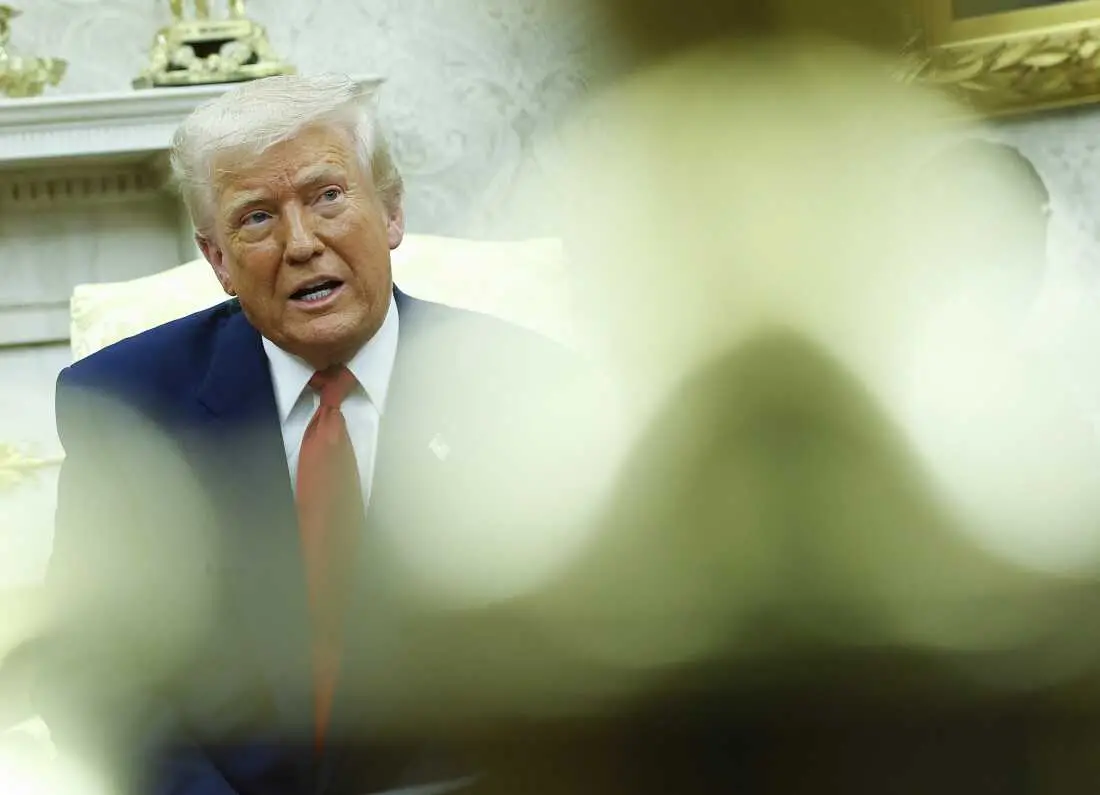Introduction
On April 26, the annual White House Correspondents’ Dinner will unfold without the presence of President Donald Trump, continuing a tradition he started during his first term. This decision amplifies the ongoing conflict between the Trump administration and the White House Correspondents’ Association (WHCA), an organization representing journalists and press members covering the presidency. Trump’s consistent absence underscores his ongoing criticism of the media landscape, which he argues is biased against his administration.
The decision to forgo attending the dinner is not just a personal preference but a calculated political statement. By maintaining his boycott of this event, Trump reiterates his resistance to mainstream media and refuses to participate in what he considers a spectacle that often aligns itself against his administration. This rejection also acts as a stark reminder of the ongoing rift between the White House and the press—a divide that has grown deeper under Trump’s leadership.
The Historical Significance of the Correspondents’ Dinner
The White House Correspondents’ Dinner dates back to 1921 and has traditionally been an event where journalists, politicians, and celebrities come together to celebrate the freedom of the press and the role of media in American democracy. The dinner serves as an opportunity for informal engagement between reporters and the executive branch. Over time, it has evolved from a modest affair to a glitzy, televised spectacle watched by millions across the globe.
The event has always been an important platform for the president to engage directly with the press. It is characterized by a blend of humor, satire, and goodwill, where the president usually delivers a comedic speech, poking fun at both himself and the journalists present. The event provides an opportunity for politicians to show their lighter side and demonstrate the crucial role the media plays in a functioning democracy.
However, in the age of polarized media and intense political divisions, the casual camaraderie once seen at the dinner has turned contentious. For President Trump, the event represents a platform for public figures to critique political figures through humor and satire, often at his expense. His absence highlights the growing tensions between his administration and the media, particularly with the way the press has treated his policies and personal conduct.
Evolution of the Dinner’s Role
Over the decades, the Correspondents’ Dinner has undergone a remarkable transformation. Once a low-profile event, it has morphed into an elaborate evening of Hollywood glamour, complete with high-profile celebrities, politicians, and journalists. The dinner is now seen as a major cultural event in Washington, D.C., attracting stars from the entertainment industry and garnering media attention worldwide.
Despite the glitz and glamour, the underlying purpose of the dinner remains the same—to celebrate the press’s essential role in holding public officials accountable and to emphasize the importance of freedom of speech in a democracy. The dinner serves as a reminder of the First Amendment and the critical role that journalists play in uncovering the truth and fostering transparency within government.
As the dinner has evolved, so too has the media landscape. With the rise of digital platforms, social media, and an increasingly fragmented news ecosystem, the Correspondents’ Dinner has become a battleground for competing political ideologies. What was once a light-hearted occasion has become a focal point for the broader cultural and political battles being waged in the U.S.
Trump’s Relationship with the Media
The fraught relationship between President Trump and the media has been one of the defining features of his political career. From the moment he announced his candidacy for president in 2015, Trump has consistently derided the media, labeling certain outlets as “fake news” and accusing them of being biased against him. His combative approach toward journalists, who he claims have misrepresented his policies and actions, has struck a chord with a significant portion of his base, which feels that mainstream media outlets are out of touch with the concerns of ordinary Americans.
Trump has used the term “fake news” to delegitimize critical press coverage, often dismissing negative stories as inaccurate or fabricated. By doing so, he has cultivated an “us versus them” mentality, presenting himself as a champion for the everyday American against what he describes as the biased elite media. His rhetoric has created a sharp divide between his supporters, who feel empowered by his critique of the press, and his critics, who accuse him of undermining journalistic integrity and stoking distrust in the media.
In response to this growing animosity between his administration and the press, Trump introduced the “Fake News Awards,” a highly publicized event meant to call attention to what he viewed as instances of media misrepresentation. These awards, which were distributed annually, served as a direct counter-narrative to the White House Correspondents’ Dinner, framing the media as adversaries of truth and transparency.
“Fake News” and Counter-Narratives
The “fake news” narrative became central to Trump’s political strategy. By labeling any unfavorable reports as “fake,” he could discredit critical media outlets and promote an alternative version of reality that was more in line with his administration’s goals. This move resonated deeply with his supporters, who viewed the mainstream media as part of an out-of-touch, left-wing establishment that was intent on undermining Trump’s presidency.
The annual “Fake News Awards” became a symbolic gesture, aimed at holding journalists accountable for what Trump and his supporters considered biased or inaccurate reporting. The awards showcased a list of reports that the Trump administration viewed as misleading or false, further deepening the divide between the media and the president. The timing of these awards, which often coincided with the White House Correspondents’ Dinner, made it clear that Trump was not willing to engage in the media spectacle that the dinner had become.
Impact on Public Attitudes
Trump’s rhetoric regarding the press has had a profound impact on public attitudes toward journalism. For many of his supporters, Trump’s criticism of the media has reinforced their distrust of traditional news outlets. This has led to a growing polarization, with many Americans now viewing the media as either allies or enemies of their political views. Trump’s ability to label media outlets as “fake news” has allowed him to reshape the narrative surrounding his presidency and galvanize his base, making his relationship with the press a key factor in his political identity.
However, the impact of Trump’s media criticism has not been universally positive. Critics argue that his attacks on the press have eroded public trust in journalism and undermined the role of the media in holding powerful institutions accountable. In an era of misinformation and disinformation, Trump’s rhetoric has fueled skepticism toward established news sources, leaving many Americans uncertain about where to turn for reliable information.
The President’s ongoing criticism of the media has also raised concerns about the long-term viability of the press as an independent institution. As distrust in the media grows, the public’s ability to discern fact from fiction becomes increasingly difficult, threatening the very fabric of democratic discourse.
The White House Correspondents’ Dinner: A Backdrop for Political Critique
Under President Trump’s leadership, the White House Correspondents’ Dinner has evolved into a platform for political critique. The dinner, which was once a lighthearted affair, has become increasingly politicized, with comedians and politicians using humor to mock the administration. This shift reflects the growing tensions between the White House and the press, with the dinner serving as a microcosm of the broader cultural and political divide.
Comedians, in particular, have used the dinner to lampoon Trump and his policies, often using satire and humor to address serious political issues. The role of political humor in the public sphere has become more important in the age of Trump, as it provides a vehicle for addressing contentious political issues through satire and comedy. However, Trump’s aversion to such direct criticism has only deepened the divide between him and the press, with his absence at the dinner underscoring his refusal to engage in what he perceives as an inherently adversarial environment.
Political Humor in the Agile Public Sphere
Humor has long been a tool for addressing political issues, and the Correspondents’ Dinner has served as a stage for public figures to deliver sharp critiques of their political opponents through comedy. For Trump, the dinner has become a venue for targeted attacks on his administration, with comedians often using barbed humor to challenge his policies and leadership style. His absence from the event is a clear statement that he is unwilling to participate in a tradition that he sees as inherently hostile.
The political humor at the Correspondents’ Dinner also reflects broader societal tensions, with comedians using their platform to address issues such as immigration, healthcare, and social justice. The dinner has become a battleground for competing political ideologies, with humor providing a lens through which to critique the status quo.
Controversy Surrounding Comedians
The inclusion of comedians who have a history of criticizing the Trump administration has led to controversy in recent years. Amber Ruffin, a comedian known for her sharp political commentary, was initially slated to headline the 2024 Correspondents’ Dinner but was later removed due to her tendency to directly challenge the administration’s narrative. Ruffin’s removal sparked debates about the role of comedy in political discourse, with some arguing that her critiques were a necessary form of political engagement, while others viewed them as divisive and inappropriate for a mainstream event like the Correspondents’ Dinner.
For Trump, the involvement of such politically charged figures at the dinner only reinforced his belief that the WHCA was biased against him and his administration. His refusal to attend the event serves as a rejection of the dinner’s current form, which he perceives as a platform for political adversaries to attack him and his policies.
Press Freedoms and Alarm in the Time of Trump
The Trump administration has raised significant concerns about the state of press freedoms in the U.S. By labeling the press as an adversary and restricting access to information, Trump has sparked an ongoing discourse about the role of media in democracy. His administration’s efforts to control the narrative and limit media access have raised alarms about transparency and the role of the press in holding power accountable.
The control of media access, such as the rotation of pool reporters and selective engagements with specific outlets, has further strained the relationship between the White House and the press. These efforts to manage media coverage reflect broader concerns about the concentration of power and the undermining of journalistic independence.
Conclusion: Setting a Path Forward
President Trump’s boycott of the White House Correspondents’ Dinner is emblematic of his broader approach to media relations, characterized by criticism, manipulation, and resistance. As the media landscape continues to evolve and public trust in journalism continues to erode, the Correspondents’ Dinner remains a focal point for discussions about the relationship between politics and the press.
The ongoing tensions between the White House and the press will continue to shape the future of media and politics in America. Trump’s actions serve as a reminder of the power of media in shaping public discourse and the challenges that arise when political figures reject traditional media institutions in favor of direct-to-consumer communication strategies.
As we look ahead, the media and political institutions must navigate a new era of engagement, one where transparency, accountability, and trust are more crucial than ever before. The evolution of the White House Correspondents’ Dinner, and its growing role as a political battleground, underscores the shifting dynamics in American politics and media, offering important lessons for future administrations and the press alike.

